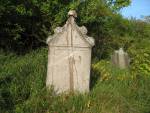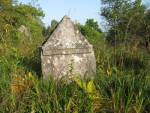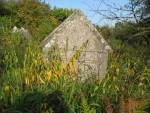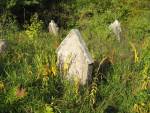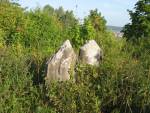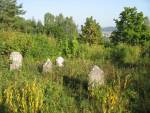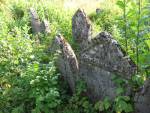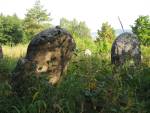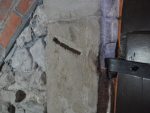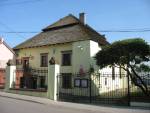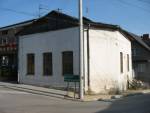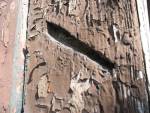| strona główna | cmentarze | warto wiedzieć | księga gości | napisz do nas |
| CHĘCINY | ||
The date of establishing the Jewish cemetery in Chęciny (Chentshin) is unknown. There is no doubt, however, that it did exist as early as the mid-17th century, as evidenced by the 1660 royal census, which stated that Jews in Chęciny already had a privilege of owning a burial site - "kierchow". Another indication of the cemetery appeared in 1668, when the starosta of Chęciny, Stefan Bidziński, decided among other things that: "The Jews shall retain all the rights and decrees serving the purpose of the synagogue and the cemetery, which they have been used to have and which have been issued to them by gracious kings". The necropolis is located outside of the town, on the south-east slope of the castle hill. Its location can be found on the military map of the Chęciny region from 1929. The cemetery is also marked on the present-day street plans of the town. It can be reached from Radkowska Street, after passing no. 37 house; a forest track is visible. Follow it for about 100 meters then take the first path on the right and walk up to the top of the hill, where several meters from below a sports field can be noticed. The cemetery is located across the left side of the hill. A steep, short path leads to it. The necropolis can also be accessed by the lane running behind St. Bartłomiej Church - in this case however, after reaching the hilltop you should head for the left side. About one hundred tombstones have been preserved within the burial grounds in Chęciny until the present time. It is difficult to give the exact number of tombs due to lush vegetation. As a result of the damages caused by World War II, the gravestones have survived in a relatively small area. As the locals report, a part of the cemetery area was taken over and completely devastated by one of the local militiamen. In view of this information, a remark made by the historian Meir Balaban in his book "Jewish Historic Monuments in Poland" published in 1929, is no longer valid: "A huge cemetery on the slopes of the castle hill, at the foot of the ruins of queen Bona's castle. Just a brief glance at the cemetery is enough to realize, that it is too extensive for the small Chęciny Jewish community. It must have been a collective cemetery comprising several other communities, in particular the community in Kielce, which was granted the privilege not to tolerate Jews (de non tolerandis Judaeis). At present, it is hard to reconstruct the old boundaries of the necropolis. The remains of the ancient, stony wall which had formerly surrounded the necropolis can still be found among the shrubbery. "People also come and take the stones for renovating pavements, they break the graves and take what they need. I tremble at the very thought of such profanity. Why can't they do this elsewhere?" |
||
General cleaning labors such as clearing of vegetation and removing of rubbish have been carried on for years at the Chęciny cemetery. Due to its location on an overgrown hillside and a lack of proper markings, the Jewish cemetery is an out-of-the-way place. What brings into question the whole purpose of marking out the route to the cemetery, however, is the fact that the hill's edge is being littered and spoilt with bonfires remains. text & photos: K. Bielawski |
||
Judaica of Chęciny
|
||
A number of traces of the Chęciny Jews can still be found, such as the renovated synagogue, the rabbi's house, the mikveh and numerous Jewish houses. Of particular interest is an antique door with a vestige of the mezuzah which can be found at Staszica Street. |
||
Synagogue |
Mikvah |
Trace of mezuzah |
| We look forward to receiving any information about Chęciny Jews and their cemetery. We are also awaiting more information from people who remember the cemetery from before World War II. |
||
The text and pictures are published by the services of www.kirkuty.xip.pl and are the property of the authors. To utilize this material it is necessary to obtain the written permission from the editor. |
||
| strona główna | cmentarze | warto wiedzieć | księga gości | napisz do nas |

